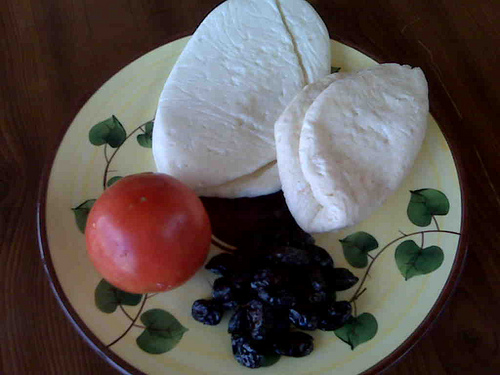- In our days Cyprus generally speaking, is praised for its Traditionaldairy products.
- Much more however it prides for their genuineness.
- In enough villages, until today is maintained with a lot of love and eagerness, the traditional manufacturing of their dairy products.
- Wherever a Cypriot citizen immigrated permanently, the fame of these products have reached there.
- Even from foreign people you will hear talking with the biggest enthusiasm, for these Cypriot and tasty dairy products and particular for the traditional Halloumi (χαλουμι).
- In Greece, England, America, Australia, Canada, Denmark, Bulgaria, just to name a few.
- In the villages they have given their better selves, but they also pride for their traditional dairy products they make.
- Therefore as we can see below, these people with so much enthusiasm, how and what they manufacture.
- The Halloumi, as well as anari (αναρη) (ricotta cheese), on the contrary to a lot of other cheeses, is white in color.
- It is not known from when it is manufactured in the villages, because the art of its manufacturing is lost in the depths of centuries.
- However even today, it continues constituting one of the main dairy products of the village and it continues being very popular.
- In older times the Halloumi (χαλουμι) and anari (αναρη), as well as the yoghurt (γιαουρτι), were manufactured from Sheppard’s and housewives for personal use.
- Today, only a few still manufacture this products in villages, but are very well desired and are considered genuine, known as village halloumi (χωριατικα) products and with a very high cost in their price.
- Today the traditional village Halloumi you will buy it for about 10 Euro per kilo, while on the contrary its production in the cities that has been manufactured in mass production its price its cheaper, because for sure will not be the genuine traditional Halloumi.

Halloumi Cheese
Let us see how the traditional Halloumi cheese is manufactured the traditional way in a Cypriot village:
- The milk of animals (usually from lamb and goat) is boiled on fire and after is added this special thickening powder (πηδκια) (rennet) that in older times emanated from a very small lamb (stomach of lamb or pig that they slaughtered at Christmas) and it is left to cool down.
- After it cools down the milk will thicken.
- Afterwards it is cut in pieces and is placed in talarin (ταλαριν) (a small woven basket).
- It is pressed in order to drain it and the liquid that will come out is gathered, is called noros (νορος).
- Noros is boiled again, with addition of more milk, usually in proportion of one to ten.
- Noros thickens again, therefore it gives as the anari (αναρη) ricotta cheese that either remains unsalted, or salt is added to it and is stored after is dried and is used to be grated over pasta.
- Anari, after is taken, is again pressed in talarin, therefore with draining it we have once again quantity of noro, in witch we will put the Halloumi cheese, in order to be stored and maintained.
- In the meantime when the Halloumi cheeses are drained from their liquids, after the process in the talarin, they are placed in the noro that remains after the production of the anari and they are cooked by boiling them on low fire, for roughly one hour.
- It is characteristic that, when they are cooked, they come up on the surface of the noros in which they boil in.
- After each piece surface to the top, is taken out, salted, added some finely chopped spearmint, each piece is folded in two and is placed for storage in glass containers.
- When the container is filled with Halloumi cheeses, is filled with noro and is closed.
- However the extended keep of Halloumi cheese in noro, can create in them some small white worms.
- In this case, to prevent this for happening, some olive oil is added in the container, for protection.
- The Halloumi cheese is eaten as it has been manufactured, fried, cooked, or even on the grill (in this case with addition of lemon).
- It is also used for making Halloumopittes (Halloumi Pies), while many prefer it instead of anari (myzithra) grated on spaghetti or other pastas.
- Small pieces of Halloumi, are also cooked in Trachana soup.
- The Halloumi cheese constitutes one of the basic things that compose the rich traditional Cypriot meze (appetizer).
- With regards to the traditional anari, in the old days they used to eat it fresh and warm, as soon as it came out of the pot, adding sugar and sprinkled with cinnamon, or they make various preparations like the traditional Bourekia (Πουρεκια), at the days of Carnivals, before Easter Lantern.
- Also until these today they dry it to be used over any kind of pasta.
- That is to say, anari was maintained in a very thin buckram which is called kouroukla (Κουρουκλα) (thin transparent buckram made from very thin threads), thus in order to be aerated for roughly 40 days, they are hanged outside in the courtyard under the sun in order to dry well and during the night was kept in the house.
